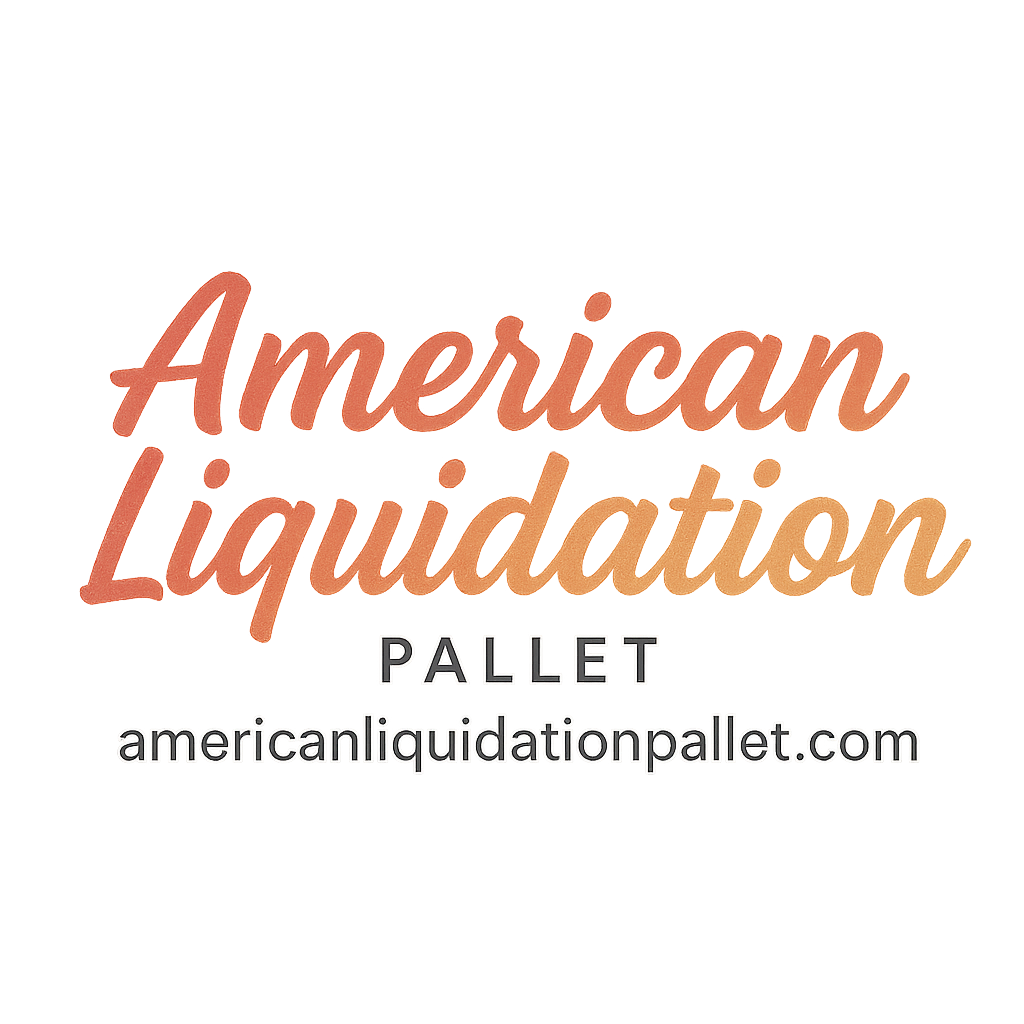Introduction to American Liquidation
If you’re even remotely interested in the reselling business or side hustles involving bulk goods, you’ve probably heard about liquidation pallets. But let’s be honest — half the terms in the industry sound like a foreign language at first. From “FOB” to “B-Stock,” it can feel overwhelming fast.
This guide breaks down 8 common terms used in American liquidation, helping beginners and even intermediate resellers understand the game and profit smartly.
We’ll also sprinkle in some expert insights, personal pointers, and key internal resources like American Liquidation Pallet — your go-to hub for buying, selling, and winning with liquidation.
Why You Need to Understand Liquidation Terms
Imagine bidding on a pallet, only to discover it’s full of used, broken goods. Or thinking “FOB” means free shipping (spoiler: it doesn’t). Misunderstanding the lingo can cost you money, time, and your reputation as a seller.
Whether you’re browsing buying and sourcing liquidation pallets or looking to resell on platforms like eBay or Facebook Marketplace, knowing these terms gives you the competitive edge you need.
1. Liquidation Pallets
What Are Liquidation Pallets?
A liquidation pallet is a bulk collection of goods — often from big retailers like Amazon, Walmart, or Target — sold at a steep discount. These items could be overstock, customer returns, shelf pulls, or discontinued stock.
Think of it as modern-day treasure hunting: you’re buying boxes of mystery items hoping to flip them for profit.
Why They’re a Hot Commodity
With the rise of side hustles and Gen Z entrepreneurs, liquidation pallets have become a booming business. It’s affordable inventory for anyone willing to put in a little elbow grease.
Related Resource
Want to learn the basics? Check out The Basics of American Liquidation.
2. MSRP (Manufacturer’s Suggested Retail Price)
How MSRP Impacts Value
The MSRP is the original price a manufacturer recommends for their product. It’s often higher than the actual sale price — but it gives resellers a benchmark for potential profit.
When buying liquidation pallets, you’ll often see the total MSRP listed. It’s tempting to think you’re getting a $3,000 pallet for $300, but don’t take MSRP at face value.
MSRP vs. Actual Selling Price
Remember: what you can sell something for on eBay or Facebook Marketplace is usually less than MSRP. Use the figure as a guide, not a guarantee.
You can explore real flipping data in the Success Stories section.
3. Manifest
The Role of Manifests in Buying Decisions
A manifest is a detailed inventory list of what’s in the pallet — like a product roadmap. It often includes product names, quantities, condition, and MSRP.
Interpreting a Manifest Correctly
Be cautious with vague manifests. If a manifest says “miscellaneous electronics,” that could mean anything from iPhones to broken cables. Read between the lines.
Dive deeper into tips, trends, and strategies to learn how to read between the lines.

4. Shelf Pulls
Why Retailers Use Shelf Pulls
These are items that were on display or remained unsold for a season. They’re not damaged, just no longer in active inventory.
Retailers like Target or Macy’s clear space for new lines by pulling these items off shelves — hence the term “shelf pulls.”
Quality Expectations
Shelf pulls are often like-new, though they might have minor cosmetic wear (like missing packaging or price tags). Great for flipping!
Check out tags like #buying-pallets and #best-sites to source shelf pulls.
5. Customer Returns
Risk vs. Reward with Customer Returns
Returns are exactly what they sound like — items sent back by customers. The condition can vary wildly: some are brand new, others defective.
Sorting and Flipping Returns
The trick is to test and sort these goods. Create categories: resellable, parts-only, and trash. Even broken electronics can be sold for parts!
Read more about selling platforms where returns sell well — like eBay or Facebook Marketplace.
6. B-Stock
Not Quite New, Not Quite Trash
B-Stock refers to items that are not brand new, but still functional. They might be refurbished, opened-box items, or excess warehouse goods.
Often, B-Stock comes directly from major retailers and brands — think Apple-certified refurbished iPhones or returned furniture from Wayfair.
Best Ways to Sell B-Stock
Market them as “open box” or “refurbished” on platforms like Amazon or eBay. Transparency builds trust — and avoids returns.
Browse through #ecommerce and #ebay tips for more flipping success.
7. FOB (Freight on Board)
What It Means in Liquidation Shipping
FOB determines who’s responsible for the goods during shipping. If it’s “FOB origin,” you — the buyer — pay for and arrange shipping from the warehouse.
How to Calculate Shipping Costs
Always factor in the shipping fee! A $400 pallet might end up costing $600 after freight. Sites like American Liquidation Pallet often note whether shipping is included.
8. Flipping
Buying Low, Selling Smart
Flipping is the backbone of the liquidation business. You buy low (from liquidation) and sell high (to end customers). It’s part hustle, part strategy.
Common Platforms for Flipping
Top places to flip liquidation goods include:
- eBay
- Facebook Marketplace
- Amazon (for new/sealed items)
- Whatnot (for live auctions)
Explore stories from young entrepreneurs to see how they’re making thousands from flipping.
Conclusion
There you have it — the 8 most common terms in the liquidation world, decoded. From MSRP and manifests to shelf pulls and flipping, understanding this language opens the door to profitable sourcing, smarter selling, and fewer newbie mistakes.
Ready to jump in? Start exploring pallets with confidence on American Liquidation Pallet, and be sure to study the basics before you invest.
FAQs
1. Is buying liquidation pallets profitable?
Yes, with the right strategy, it can be very profitable. Just understand the risks and learn how to source wisely.
2. How do I know if a pallet is worth the price?
Check the manifest (if available), understand the terms (like FOB), and factor in shipping and resale potential.
3. Where can I sell items from liquidation pallets?
eBay, Facebook Marketplace, Amazon, Craigslist, and even garage sales are great options.
4. Are all pallets the same?
Nope! Some are shelf pulls, others are customer returns, and some are mixed. The condition and value vary.
5. What’s the difference between B-Stock and customer returns?
B-Stock is usually better condition — often tested or refurbished. Customer returns may be defective or used.
6. How do I avoid getting scammed when buying pallets?
Stick to reputable sources like American Liquidation Pallet and read reviews before purchasing.
7. Is liquidation a good business for beginners?
Absolutely! Start small, learn the terms, and follow beginner tips from American Liquidation’s blog.


